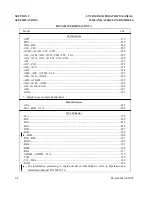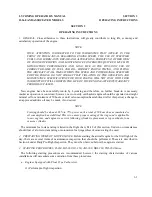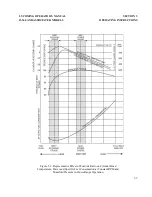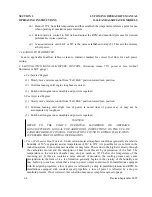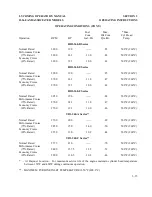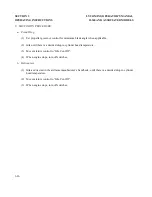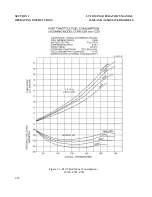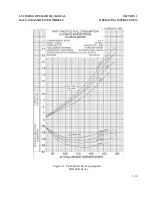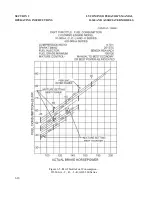
SECTION 3
LYCOMING OPERATOR’S MANUAL
OPERATING INSTRUCTIONS
O-360 AND ASSOCIATED MODELS
(b) Deduct 125°F from this temperature and thus establish the temperature reference point for use
when operating at maximum power mixture.
(c) Return mixture control to full rich and adjust the RPM and manifold pressure for desired
performance cruise operation.
(d) Lean out mixture until EGT or TIT is the value established in step (b). This sets the mixture
at best power.
2. LEANING TO FLOWMETER.
Lean to applicable fuel-flow tables or lean to indicator marked for correct fuel flow for each power
setting.
3. LEANING WITH MANUAL MIXTURE CONTROL.
(Economy cruise, 75% power or less, without
flowmeter or EGT gauge.)
a. Carbureted Engines.
(1) Slowly move mixture control from “Full Rich” position toward lean position.
(2) Continue leaning until engine roughness is noted.
(3) Enrich until engine runs smoothly and power is regained.
b. Fuel Injected Engines.
(1) Slowly move mixture control from “Full Rich” position toward lean position.
(2) Continue leaning until slight loss of power is noted (loss of power may or may not be
accompanied by roughness.
(3) Enrich until engine runs smoothly and power is regained.
WARNING
REFER
TO
THE
PILOT’S
OPERATING
HANDBOOK
OR
AIRFRAME
MANUFACTURER’S MANUAL FOR ADDITIONAL INSTRUCTIONS ON THE USE OF
CARBURETOR HEAT CONTROL. INSTRUCTIONS FOUND IN EITHER PUBLICATION
SUPERSEDE THE FOLLOWING INFORMATION.
c. Use of Carburetor Heat Control –
Under certain moist atmospheric conditions (generally at a relative
humidity of 50% or greater) and at temperatures of 20° to 90°F it is possible for ice to form in the
induction system. Even in summer weather ice may form. This is due to the high air velocity through
the carburetor venturi and the absorption of heat from this air by vaporization of the fuel. The
temperature in the mixture chamber may drop as much as 70°F below the temperature of the
incoming air. If this air contains a large amount of moisture, the cooling process can cause
precipitation in the form of ice. Ice formation generally begins in the vicinity of the butterfly and
may build up to such an extent that a drop in power output could result. In installations equipped
with fixed pitch propellers, a loss of power is reflected by a drop in manifold pressure and RPM. In
installations equipped with constant speed propellers, a loss of power is reflected by a drop in
manifold pressure. If not corrected, this condition may cause complete engine stoppage.
3-8
Revised September 2007
Summary of Contents for AIO-360 Series
Page 13: ...This Page Intentionally Left Blank ...
Page 15: ...This Page Intentionally Left Blank ...
Page 21: ...This Page Intentionally Left Blank ...
Page 23: ...This Page Intentionally Left Blank ...
Page 35: ...This Page Intentionally Left Blank ...
Page 37: ...This Page Intentionally Left Blank ...
Page 105: ...This Page Intentionally Left Blank ...
Page 107: ...This Page Intentionally Left Blank ...
Page 121: ...This Page Intentionally Left Blank ...
Page 123: ...This Page Intentionally Left Blank ...
Page 131: ...This Page Intentionally Left Blank ...
Page 149: ...This Page Intentionally Left Blank ...
Page 151: ...SECTION 8 LYCOMING OPERATOR S MANUAL TABLES O 360 AND ASSOCIATED MODELS 8 2 ...
Page 152: ...LYCOMING OPERATOR S MANUAL SECTION 8 O 360 AND ASSOCIATED MODELS TABLES 8 3 ...

